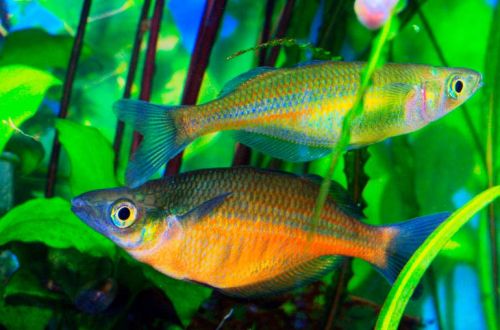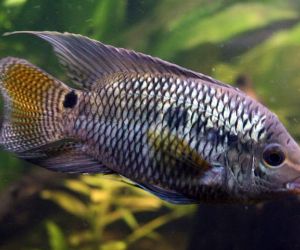
Zebra Pleco
Hypancistrus Zebra or Zebra Pleco, scientific name Hypancistrus zebra, belongs to the Loricariidae family. This species has recently appeared in the aquarium trade. Since the 90s, it has been mainly exported from Brazil, but in 2004 the government imposed a ban on its export due to environmental concerns, but by that time catfish were already actively bred in an artificial environment, so the ban did not affect their availability. Now it is a popular aquarium fish, which is considered one of the most beautiful among catfish.

Contents
Habitat
It comes from the Xingu River basin (port. Xingú) – the right tributary of the Amazon is closer to the delta. It flows mainly through Brazil. It lives in conditions of moderate current among heaps of rocks scattered over sandy soil.
Brief information:
- The volume of the aquarium – from 60 liters.
- Temperature – 26-30°C
- Value pH — 6.0–7.5
- Water hardness – soft to medium hard (2-15 dGH)
- Substrate type – sandy, soft
- Lighting – subdued or moderate
- Brackish water – no
- Water movement – light or moderate
- The size of the fish is up to 8 cm.
- Nutrition – any drowning
- Temperament – peaceful
- Keeping alone or in a group in the presence of shelters
Description
Adults reach a length of about 8 cm. The body pattern consists of contrasting black and white stripes, reminiscent of the Zebra color, which is reflected in the name of this species. The pattern is repeated on the fins and tail. Sexual dimorphism is weakly expressed. If you look closely, then in some catfish on the first rays of the pectoral fins you can see small notches – these are males, they are absent in females.
Food
The diet mainly consists of protein foods – live or frozen food from bloodworms, chopped pieces of mussels, shrimp. From time to time, the diet can be diversified with herbal supplements, for example, by offering a piece of cucumber.
Maintenance and care, arrangement of the aquarium
The optimal volume of the tank for one fish starts from 50 liters. In the design, you should try to recreate the natural habitat, that is, a sandy substrate with scattered smooth stones, boulders of different sizes, a shelter in the form of a cave is built from pieces of rock, where the catfish will spend time. You can also use a large snag as a decoration. There is no need for living plants.
Zebra Pleco prefers fairly high temperatures of 26–30°C and at the same time needs a high level of dissolved oxygen. It is known that oxygen dissolves poorly in warm water, therefore, in order to avoid hypoxia, it is necessary to place additional spray stones.
Maintenance of the aquarium is quite standard, in addition to maintaining the recommended water composition parameters (temperature, pH and dGH), regular cleaning of the soil from organic waste and weekly replacement of part of the water (15-20% of the volume) with fresh water is carried out.
Behavior and Compatibility
In terms of temperament, this is a suitable species for many aquarium fish, but due to the need for high temperatures, the list of neighbors is drastically reduced. In addition, the Zebra Pleco is shy and can be intimidated by overly active fish. Ideally, it is kept in biotope aquariums. It is allowed to combine with such species as Discus, Red-nosed Tetra, Tetra-phantom and the like, capable of adapting to the mark of 29–30 ° С. Territorial fish, catfish will compete with their relatives and other catfish for space on the bottom, so provide enough hiding places.
Breeding / breeding
The zebra hypancistrus often spawns in home aquaria, and under the right conditions it is only a matter of time before the fry appear. To control the beginning of the mating season in catfish and ensure the safety of the brood, you can use a spawning aquarium. Usually it is a small tank from 30 liters. In the design, shelters are key. They can be formed both from small ceramic pots turned on their side, pieces of PVC pipes, and special decorative objects imitating underwater grottoes and caves. The inlet should be slightly larger than the width of the fish itself. The shelter is located near the spray stones to ensure high oxygen content and water circulation. There is no need for plants and substrate. The pH, dGH and temperature parameters are identical to the main tank.
The stimulus for spawning is the renewal of water (50–70% of the volume) to fresh and cool at 2–4°C, which mimics the rainy season in the wild. The procedure is repeated every 2-3 days. After some time, the catfish will begin the mating season. Males, having chosen a suitable shelter, will invite females to their place. When a pair finds each other, they retire for a few days, then the female swims away, and the male remains to protect and take care of the clutch. Everything is laid from 7 to 15 eggs. The fry appear in a week, and after another 2-3 days they get out of the shelter and begin to swim freely. From this moment, the male can be returned back.
Feed specialized food for aquarium fish fry, as well as brine shrimp nauplii, microworms and similar products. The fry are very voracious, so food must be available constantly.
Fish diseases
The main cause of most diseases is unsuitable living conditions and poor-quality food. If the first symptoms are detected, you should check the water parameters and the presence of high concentrations of hazardous substances (ammonia, nitrites, nitrates, etc.), if necessary, bring the indicators back to normal and only then proceed with treatment. Read more about symptoms and treatments in the Aquarium Fish Diseases section.





